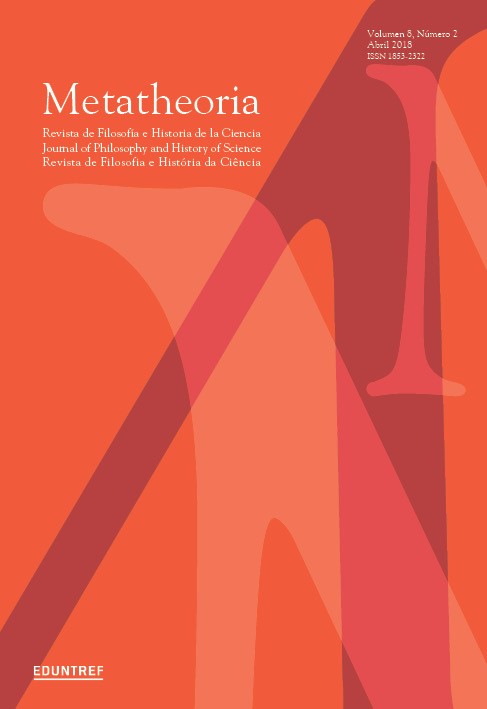Continuidad y discontinuidad en la construcción de nicho: hacia una lectura política del proceso de domesticación
DOI:
https://doi.org/10.48160/18532330me8.181Palabras clave:
selección artificial, construcción de nicho, domesticación, valor de uso, Marx, praxisResumen
La variación en estado doméstico ha sido estudiada por la biología evolutiva desde el inicio del programa darwinista de investigación, destacando la selección artificial como parte del desarrollo del concepto de selección natural. Recientemente la teoría de construcción de nicho ha sido usada para analizar los procesos de domesticación que históricamente han formado parte de la vida social en los seres humanos. En este trabajo abordamos las implicaciones de la selección artificial como elemento en la línea de tensión dialéctica entre la sociedad y la naturaleza. Desde una perspectiva marxista analizamos los elementos de continuidad y discontinuidad que la reproducción de una “segunda naturaleza” introduce en el proceso de construcción de nicho, concentrándonos en la dimensión política (Echeverría 2001) como proceso emergente en la re-producción de una identidad social y cultural en las sociedades humanas. En este trabajo nos centramos en el caso de las plantas domesticadas.
La existencia de un telos o intencionalidad subyacente configuran rasgos distintivos de la construcción de nicho humano (Zeder 2009) y centralmente de la selección artificial. La reproducción de una segunda naturaleza se orienta por un telos que no tiene que ver solamente con la magnitud escalar de los recursos apropiados por los seres humanos, sino con la generación de valores de uso adecuados a una cierta forma de vida social que es recreada y puesta en juego: una dimensión política.
Citas
Cardwell, V. (1982), “Fifity Years of Minnesota Corn Production: Sources of Yield Increase”, Agronomy Journal74: 984-989.
Darwin, C. ([1859]2004), On the Origin of Species, Cambridge: Harvard University Press.
Darwin, C. ([1868]2012), The Variation of Animals and Plants Under Domestication, London: Forgotten Books Classic Reprints.
Dawkins, R. (1982), The Extended Phenotype: The Gene as the Unit of Selection, Oxford: Oxford University Press.
Echeverría, B. (1998), Valor de uso y utopía, México: Siglo XXI.
Echeverría, B. (2001), Definición de la cultura, México: Facultad de Filosofía y Letras, UNAM-Itaca.
Gepts, P. (2004), “Domestication as a Long Term Selection Experiment”, Plant Breeding Reviews24: 1-44.
Greggory, T.R. (2009), “Artificial Selection and Domestication: Modern Lessons from Darwin’s Enduring Analogy”, Evolution, Education and Outreach2: 5-27.
Gur, A. y D. Zamir (2004), “Unused Variation Can Lift Yield Barriersin Plant Breeding”, PLoSBiology2: e204.
Haldane,J.B.S.(1924-1934), “A Mathematical Theory of Natural and Artificial Selection PartsI-X”, Transactions of the Cambridge Philosophical Society.
Haldane, J.B.S. (1934), “A Mathematical Theory of Natural and Artificial Selection. Part X. Some Theorems in Artificial Selection”, Genetics 19: 412-429.
Harlan, J.R. (1971), “Agriculture Origins: Centers and Non-Centers”, Science174: 468-474.
Kendal, J., Tehrani, J. y J. Odling-Smee (2011), “Human Niche Construction in Interdisciplinary Focus”, Philosophical Transactions of the Royal Society, SeriesB366: 785-792.
Leibold, M.A. (1995), “The Niche Concept Revisited: Mechanistic Models and Community Context”, Ecology76: 1371-1382.
Leibold, M.A. y P. Geddes (2005), “El concepto de nicho en las metacomunidades”, Ecología Austral15: 117-129.
Levins, R. y R. Lewontin (1985), “The Organism as the Subject and Object of Evolution”, en Levins R. y R. Lewontin, The Dialectical Biologist, Cambridge, MA: Harvard University Press, pp. 85-106.
Lewontin, R. (1978), “Adaptation”, Scientific American239: 212-219.
Lewontin, R. (2000), The Triple Helix: Gene, Organism and Environment, Massachusetts: Harvard University Press. Marx, C. (2005[1867]), El Capital, TomoI, Vol. 1, México: Siglo XXI.
Millá, R., Osborne, C.P., Turcotte, M.M. y C. Violle (2015), “Plant Domestication Throughan Ecological Lens”, Trends in Ecology and Evolution30: 463-469.
Murphy, D.J. (2007), People, Plants and Genes, Oxford: Oxford University Press.
O’Brien, M. y K.N. Laland (2012), “Genes, Culture and Agriculture: An Example of Human Niche Construction”, Current Anthropology53: 434-470.
Odling-Smee, J., Laland, K.N. y M. Feldman (2003), Niche Construction: The Neglected Process in Evolution, Princeton, NJ: Princeton University Press.
Richerson, P.J., Boyd,R. y R.L. Bettinger (2001), “Was Agriculture Impossible During Pleistoscene but Mandatory During Holocene? A Climate Change Hypothesis”, American Antiquity66: 387-411.
Sánchez Vázquez, A. (2003), Filosofía de la praxis, México: Siglo XXI.
Schultz, E. (2015), “La construcción de nichos y el estudio de los cambios de cultura en antropología: desafíos y perspectivas”, Revista Interdisciplina3: 131-151.
Smith, B. (2007), “Niche Construction and the Behavioral Context of Plant and Animal Domestication”, Evolutionary Anthropology16: 188-199.
Smith, B.(2011), “General Patterns of Niche Construction and the Management of ‘Wild’ Plant and Animal Resources by Small-Scale Pre-Industrial Societies”, Philosophical Transactions of the Royal SocietyB366: 836-848.
Shomoura, A., Izawa, T., Ebana, K., Ebitani, T., Kanegae, H., Konishi, S. y M. Yano (2008), “Deletionina Gene Associated with Grain Size Increased Yields During Rice Domestication”, Nature Genetics40: 1023-1028.
Tester, M. y P. Langridge (2010), “Breeding Technologies to Increase Crop Productionina Changing World”, Science327: 818-822.
Vavilov, N. ([1926]2009), “Centers of Origin of Cultivated Plants”, en Vavilov, N.,Origin and Geography of Cultivated Plants, Cambridge: Cambridge University Press, pp.22-135.
Zeder, M. (2009), “The Neolithic Macro-(R)evolution: Macroevolutionary Theory and the Study of Culture Change”, Journal of Archaeological Research17: 1-63.
Zohary, D. (2004), “Unconscious Selection and the Evolution of Domesticated Plants”, Economic Botany58: 5-10.
Descargas
Publicado
Cómo citar
Número
Sección
Licencia
Derechos de autor 2018 Metatheoria – Revista de Filosofía e Historia de la CienciaLos documentos aquí publicados se rigen bajos los criterios de licencia Creative Commons Argentina.Atribución - No Comercial - Sin Obra Derivada 2.5





